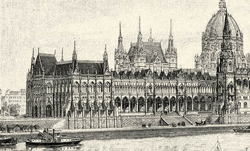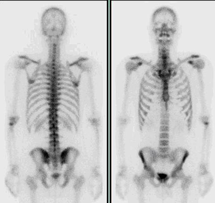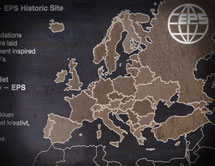The origin of nuclear medicine
George de Hevesy (1885-1966) became the founder of nuclear medicine through his research at the Niels Bohr Institute and in collaboration with Niels Bohr in the period from the 1920s to the early 1940s. George de Hevesy a Hungarian nobleman and educated in physical chemistry at the Universities of Vienna and Freiburg.

Doctorate at the age of 23
He was born in 1885 in Budapest, where he also began his university studies in the early 1900s, but after only a year he transferred to the Technical University in Berlin, Germany, and he ended up studying at several universities around Europe before finishing his education with a doctorate at the age of 23 in 1908.

In 1912, Hevesy was on a research visit with the famous Professor Ernest Rutherford in Manchester when he met the same aged Niels Bohr, who was also a guest of Rutherford. The two became friends.
It was also here that Hevesy discovered the basic principles for the indicator technique, which later evolved into nuclear medicine.
An impossible problem

Rutherford set Hevesy the challenge to separate Radium-D from lead. Radium-D is an isotope of lead, that is, it has the chemical properties of lead, but with a different mass of the most common.
It was not known at the time and the problem is that you cannot separate a single lead-isotope from the rest of the lead by purely chemical methods. So it was something of an impossible task Ernest Rutherford had given Hevesy.
Hevesy and many others in Europe worked in vain on the problem, but Hevesy was the first who, instead of looking at the lack of success as a defeat, turned a negative result into a significant discovery.
Hevesy’s simple and ingenious idea was that the radioactive Radium-D, which could not be separated from the lead, could be detected in the body and thus could be used as an indicator or tracer for lead.
Trace elements in the mashed potatoes
The indicator technique, where the radioactive lead is used as an indicator for the lead’s physical, chemical, physiological and biological behaviour was the foundation for what later evolved into nuclear medicine. In 1912, when Hevesy discovered the indicator principle, it was a very important discovery and it still is.

Rumour has it that George de Hevesy took his boarding house landlady by surprise, when he revealed that she had been serving the same food several days in a row.
But the method could also be used for more than just medical experiments ...
It is said that Hevesy used the indicator principle by placing a bit of Radium-D in the mashed potatoes he got warmed-up day after day at the English boarding house where he lived.
Hevesy was used to better as a Hungarian nobleman and had asked to not be served reheated leftovers.
The landlady denied that she served leftovers, but using the indicator technique, Hevesy could prove that the Radium-D he had put in the mashed potatoes on Thursday appeared on the dinner table again on Friday.
Nuclear medicine


